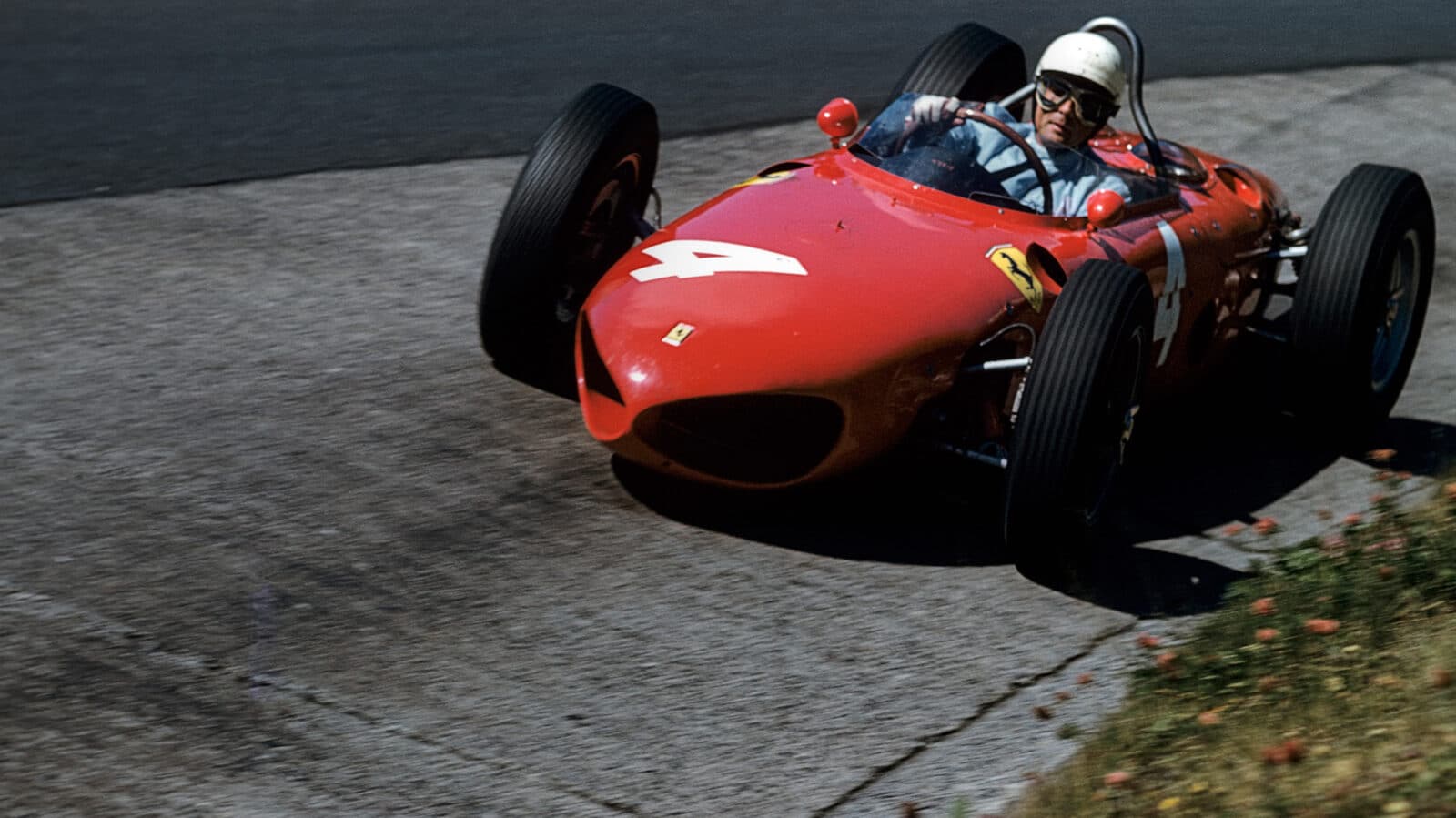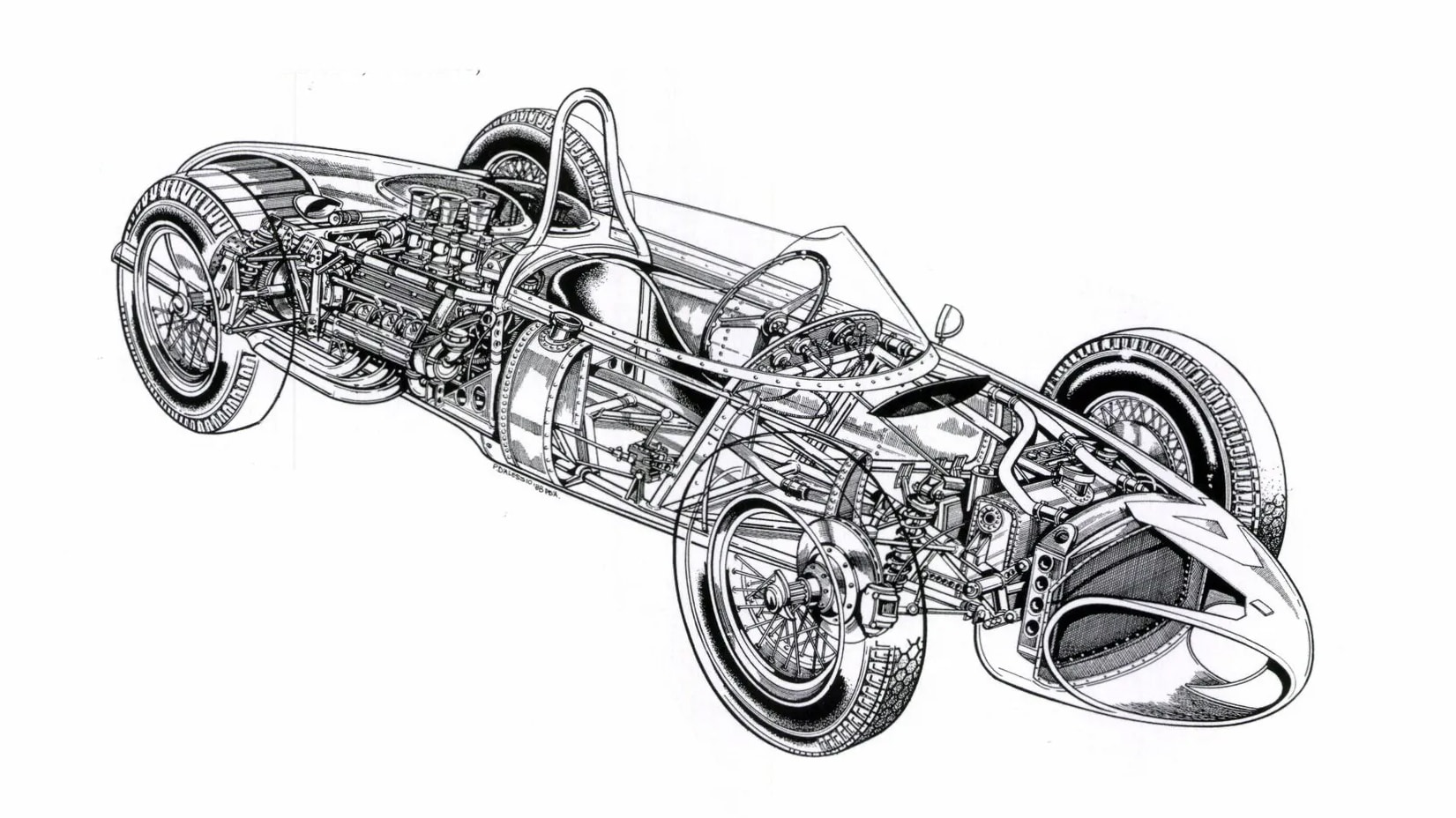Ferrari 156: Shark strike
Few F1 cars have more charisma than the 'sharknose' Ferrari, the 1.5-litre era's most distinctive contender. And its beauty went beyond the superficial, says Preston Lerner

Bernard Cahier/Getty Images
Ferrari’s F1 Finest
2nd, Ferrari 156
<< Ferrari 312T: Central figure
>> Ferrari 500: Light fantastic
The ‘sharknose’ Ferrari 156, the grand prix car that reigned supreme in 1961, was the last of a breed. Hang on, you say. Wasn’t the 156 the first successful rear-engined Formula 1 Ferrari?
Well, yes. But look at it next to its British rivals — spindly mosquitoes built on the altars of efficiency and expediency. The Ferrari, by contrast, was a substantial piece of rolling sculpture with a robust chassis, exquisite proportions and, of course, that memorably malevolent twin-nostril nose-piece. “It was built,” suggests Phil Hill, 156’s most celebrated exponent, “the way a race car ought to be built.”
Blessed with a superlative engine, the ‘sharknose’ Ferrari was compromised by excessive girth and insufficient grip. As a result, the car is remembered as much for a pair of defeats as it is for its many triumphs — Hill’s world crown, a constructors’ title and five wins and six poles in seven world championship events, not to mention victories in two non-points races. At Spa-Francorchamps, the 156 established a standard of domination never again matched in Formula One by finishing 1-2-3-4.
What makes this race log seem even gaudier is the fact that it was produced not by the biggest budget in motorsport and the finest driver on the planet — Ferrari’s 2002 paradigm — but by six drivers who began the season with a grand total of one grand prix win between them. Then again, the Ferrari of yore had something the current team is missing: its founder.
While British constructors had turned a blind eye toward the dawn of the 1.5-litre formula, Enzo Ferrari was already working on a clean-sheet engine for the 1961 season. Published reports rate Carlo Chiti’s V6 at 190bhp (Hill reckons 185) while the stopgap Coventry-Climax four-banger generated only 150. “We got pretty damn good horsepower out of the engine,” remembers Hill. “But 40 horses more than the Climaxes? That seems like a stretch.”
F1 rookie Giancarlo Baghetti gave the 156 a debut victory at the minor Syracuse Grand Prix. At Monaco, where the championship season opened, the Ferraris were the class of the field — except for an inspired Stirling Moss and his nimble Lotus 18. Although Richie Ginther, Hill and Wolfgang von Trips finished 2-3-4, they were victimised by rear suspensions that required huge dollops of negative camber. And, as Hill drily notes: “A racehorse is not as quick as a dog around the living room.”

But four straight Ferrari victories followed, with the only challenges coming from infighting within the team — another telling difference between Ferrari then and now. Around the Nürburgring, Hill shattered the nine-minute barrier and, perhaps even more impressively, outqualified von Trips by 10sec. But in a race that began on a damp circuit, Moss ran his Dunlop rain tyres right down to the cord to score an epic victory on the most challenging of tracks.
The Ferrari’s final race of the season, at Monza, was another bittersweet affair. Hill clinched the drivers’ crown and the constructors’ championship while cruising to his second win of the season. But von Trips was killed — along with 14 spectators — when he and Jim Clark touched wheels. The twin-nostril 156 never won another race.
Looking back, the ‘sharknose’ Ferrari was not a car for all seasons so much as it was a car for one particular season. But a win is a win is a win, and few F1 cars from the Scuderia have dominated the world championship as thoroughly as did the 156.
Ferrari 156 statistics, 1961-62
• Grands prix entered 13
• Wins 5
• Additional podiums 13
• Pole positions 6
• Fastest laps 5
• Laps led 285
